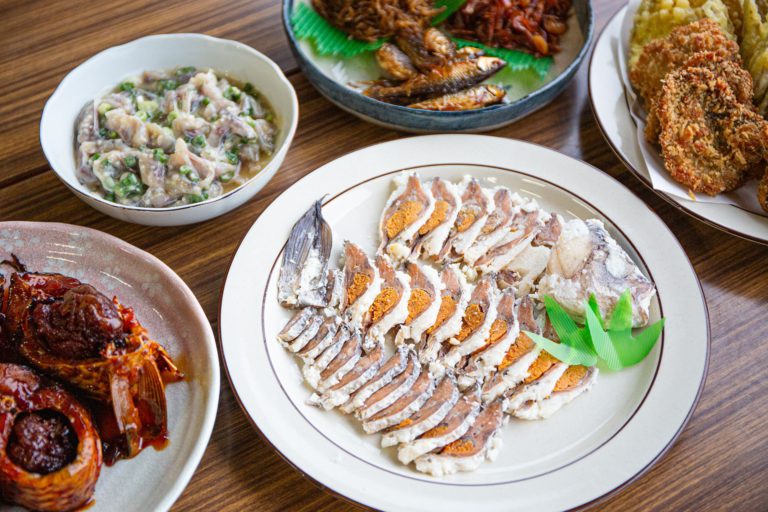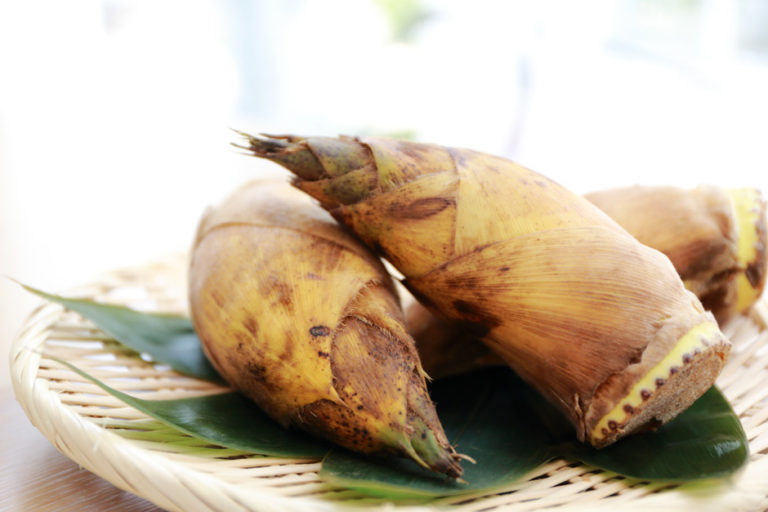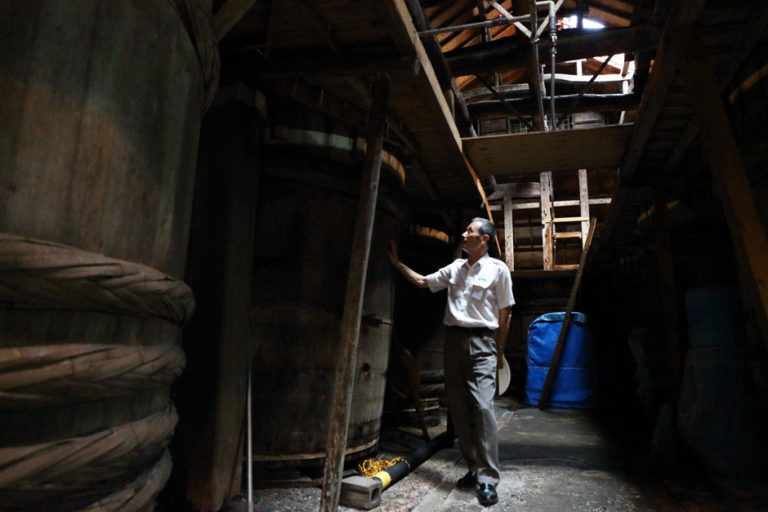Okaki rice chips epitomize the flavors of Japan
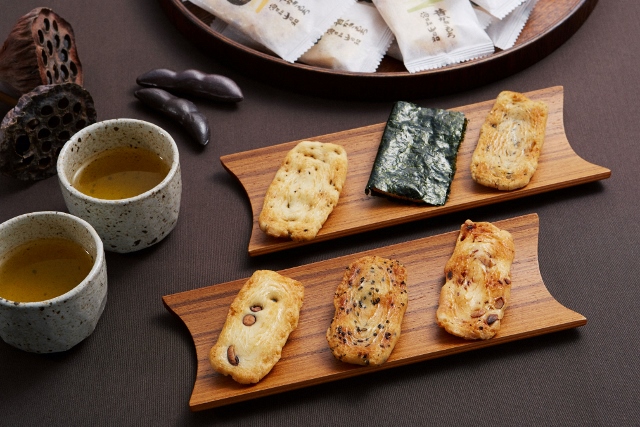
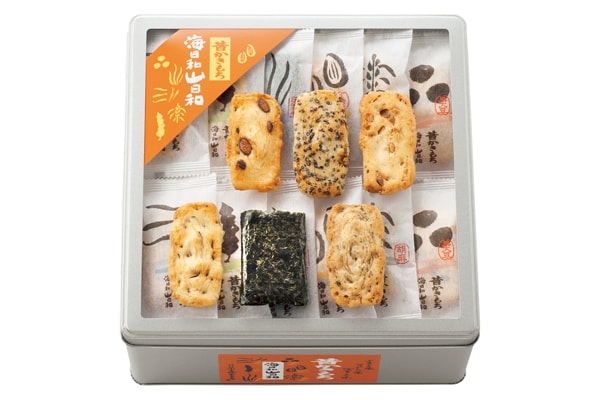
*Package shape varies according to price.
*Packaging design may vary depending on the season.
In this edition, the SHUN GATE team takes an in-depth look at a perennial favorite called Umibiyori, Yamabiyori. This is a selection of traditional okaki rice snacks made by Osama Rice Cracker, a company dedicated to making okaki the traditional way with a range of interesting ingredients.
The word Umibiyori means delicacies from the oceans while Yamabiyori means delicacies from the fields. There are six flavors in total: Umibiyori has three seaweed flavors (nori, kombu and hijikijako) while Yamabiyori flavors are black soybean, almond and sesame.
The editorial team here at SHUN GATE was lucky enough to receive a box of Umibiyori, Yamabiyori to try. In this article, we give you our impressions of this product, including taste, appearance and other important considerations.
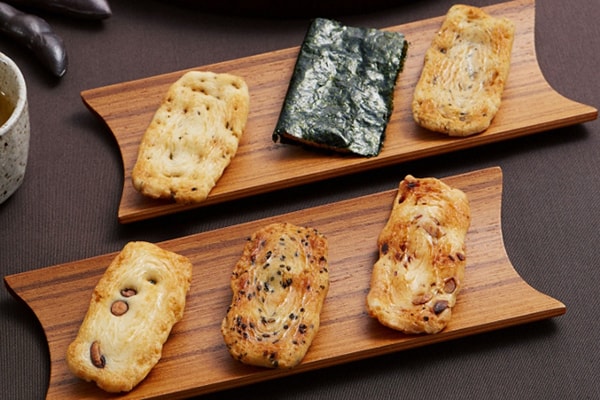
Distinctive and delicious flavors to tempt the palate
Our taste test begins with the nori seaweed version, which is part of the Umibiyori selection. Nori is the perfect complement to an okaki cracker, and the respective flavors of nori and rice come across together. The nori is sourced from Chiba prefecture. It has been specially selected because it has a strong aroma of the sea that goes well with the okaki, which is presumably why it complements the okaki so well. The seaweed used in the two other Umibiyori flavors, kombu and hijikijako, is also sourced domestically, to ensure an authentic Japanese taste for both the rice cracker and seaweed components.
Next we turn to the three Yamabiyori flavors. Almond and black soybean are characterized by the fragrance of beans and a delightful aftertaste. The sesame version has a depth of flavor that seems to lock in the rich taste of sesame. Unlike many snacks that have an overriding sweet or salty flavor, okaki rice crackers serve to enhance the natural flavor of the ingredients, providing the perfect combination of sweetness and fragrance. The six varieties present unique and distinctive flavors, and it’s hard to stop at just one or two. With a selection of flavors from the oceans and the fields, Umibiyori, Yamabiyori is sure to appeal to people of all ages and makes the ideal gift.
Traditional techniques are the best way to enhance the natural flavors
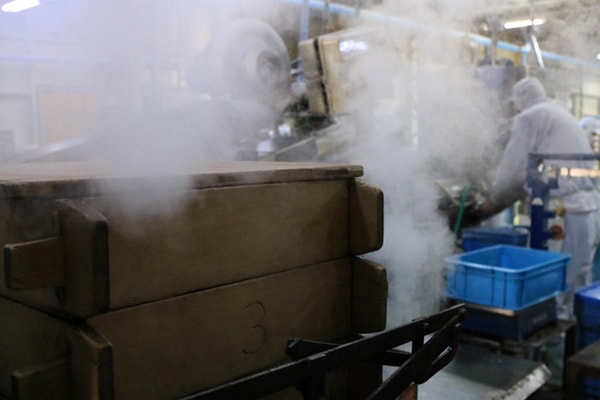
Founded in 1924, Osama Rice Cracker has a 90-year history of producing a delicious range of okaki and arare products made the traditional way with painstaking care and attention using only the finest selected ingredients.
Okaki are made by pounding freshly steamed rice into a paste, then shaping the paste into cracker-sized pieces, and finally drying and baking the crackers. At Osama Rice Cracker, the whole process takes nearly a week. We asked Noda factory foreman Mr. Narushima why they use such a slow process, which on the face of it would appear to be highly inefficient compared to conventional food manufacturing.
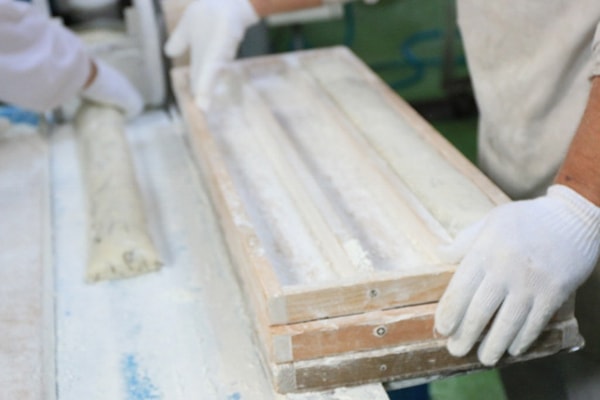
“You can churn them out more quickly than we do,” explains Narushima, “but you won’t get the same depth of flavor. It takes time and effort?there’s no other way. That’s why we insist on sticking to the traditional technique for making okaki. It starts with steaming the mochi rice in low-temperature steam with high moisture content. This helps to minimize damage to the rice grains while also enhancing the flavor of the starch. The freshly steamed rice grain?not rice flour?is then pounded into a paste to further enhance the flavor. The paste is kneaded then pressed into wooden molds for shaping. The wooden molds we use today are the same ones that we have been using since long ago. They do an excellent job at absorbing moisture from the rice paste and are vital for ensuring optimum flavor.”
Osama Rice Cracker makes okaki the traditional way, with effort and patience. You can taste the skill and dedication of the experienced artisans who are devoted to ensuring that each one of the processes helps to maximize the delicious taste of these rice crackers.
Enthusiasm and dedication in every process
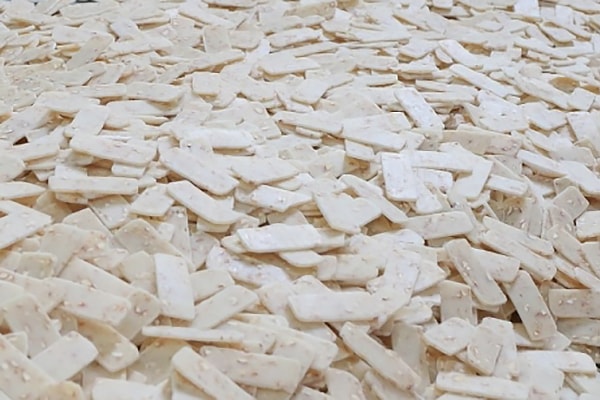
Drying is the single most important part of the process, according to Narushima. The crackers must be dried uniformly, not just on the surface but all the way through.
“If they are not dried properly they can burn when we try to bake them,” he explains, “or they will be too hard or won’t have that distinctive crunchy texture. That’s why we like to dry them slowly for three or four days. The drying process is susceptible to changes in weather conditions and ambient temperature fluctuations, so our experienced operators monitor it closely on an ongoing basis to make sure everything’s going OK. When you can see hundreds of hairline cracks on the surface, that’s the sign of a properly dried okaki. Then it’s time to send them off for baking.”
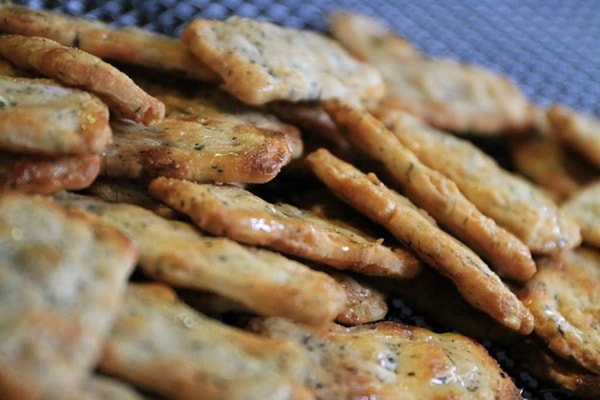
Once the okaki are deemed to be dry enough, the next step is baking. Moisture content is carefully monitored during the baking process. In the final step, the baked okaki are coated with soy sauce and sprayed lightly with oil.
Using traditional wooden molds to soak up the moisture from the mochi, inspecting the okaki constantly during the drying process?these are just two examples of the care and attention that goes into the manufacturing process at Osama Rice Cracker. You could be mistaken for thinking that this is a five-star restaurant rather than a manufacturer of dried crackers.
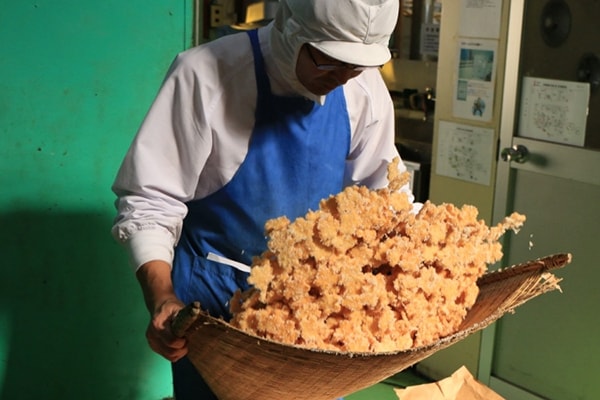
During our visit we meet Hiroaki Onodera, the only worker in the factory with responsibility for sprinkling sugar on the okaki. Onodera tells us he’s been doing this job for 17 years. “The traditional approach is definitely the best,” he says. “When you do it by hand just like they did in the old days, you can be more liberal with the application of sugar over the soy sauce coating. And it also creates a bit of unevenness, in that some okaki will get more than others. I think this is a good thing. Instead of a machine churning them out all exactly the same, you’re making adjustments as you go. So each okaki has its own individual personality, if you like, and a deeper sense of flavor.”
Listening to Onodera you get a real sense of the dedication and passion of these workers.
Global strategy predicated on the notion of hospitality
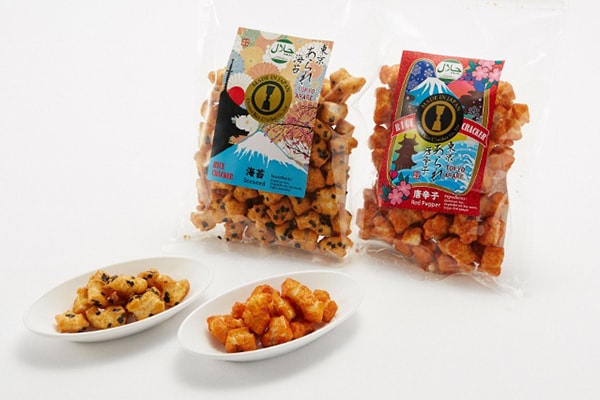
Osama Rice Cracker is keen to promote the delights of rice snacks made the traditional way to a wider audience beyond the shores of Japan. To this end, the company has recently released a Halal-certified product made specifically for the Muslim community, called Tokyo Arare. Muslims are permitted to eat only foods that are certified as Halal to indicate that they contain no traces of products such as pork and alcohol that are forbidden under Islamic religious law. Halal certification also imposes a number of restrictions on processing and handling procedures.
* There are several Halal certification organizations in Japan. The certification for Tokyo Arare was provided by the Nippon Asia Halal Association (NAHA).
Osama Rice Cracker director Mr. Kimura explains the history of how Tokyo Arare came to be.
“Osama Rice Cracker has been in the export business for over 50 years,” says Kimura. “We were interested in Islamic culture, and were inspired to develop the Tokyo Arare product for Muslim consumers. We spent considerable time and effort working to get the Halal certification.
“We set aside a dedicated section of the factory for producing Tokyo Arare. The equipment and even the cleaning tools are all separate to those used to make our other products. In the process of working towards Halal certification we learned a great deal not only about the technical requirements but also about the Muslim people and their faith. In developing a Halal product, we are simply demonstrating our basic commitment to a fundamental business principle, of designing products that people want. We want to introduce people outside of Japan to the joy of rice-based snacks. We believe that our authentic Made in Japan product tastes better than the overseas versions. We want people to appreciate the difference.”
Tokyo Arare is proving popular among foreign visitors and is also increasingly purchased by Japanese businessmen as a gift for clients in Muslim countries.
Osama Rice Cracker is dedicated to the challenge of promoting Japanese rice-based snacks to overseas markets. The future looks bright for the traditional Japanese rice snack okaki.
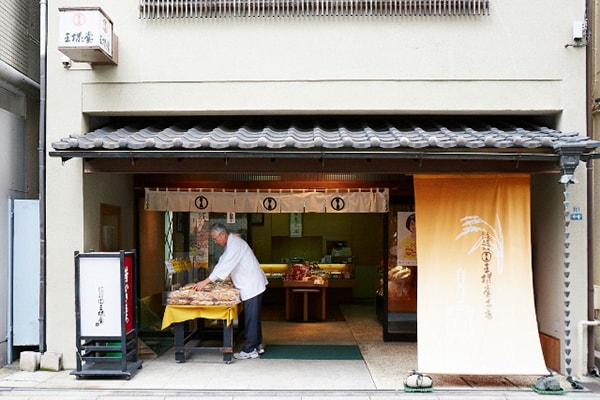
Both Umibiyori, Yamabiyori and Tokyo Arare are available for purchase at the Osama Rice Cracker store along with more than 40 other products. The store is located in the bustling Asakusa district, one of Tokyo’s premier drawcards for tourists from Japan and all over the world. Osama Rice Cracker is the perfect symbol of Japanese-style hospitality, making okaki and arare rice snacks the traditional way for the last 90 years. So why not pop in next time you’re in downtown Asakusa.

